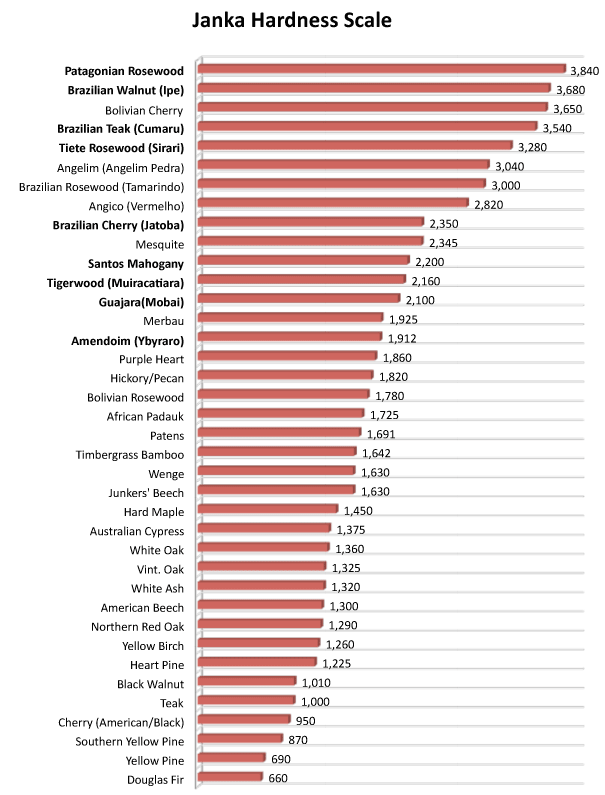Janka Hardness Scale
The Janka hardness test measures the resistance of a sample of wood to denting and wear. It measures the force required to embed an 11.28mm (.444 in) steel ball into wood to half the ball’s diameter. This method leaves an indentation. A common use of Janka hardness ratings is to determine whether a species is suitable for use as flooring.
The hardness of wood varies with the direction of the wood grain. Testing on the surface of a plank, perpendicular to the grain, is said to be of “side hardness”. Testing the cut surface of a stump is called a test of “end hardness”.
The results are stated in various ways, which can lead to confusion, especially when the name of the actual units employed is often not attached. In the United States, the measurement is in pounds-force (lbf). In Sweden it is in kilograms-force (kgf), and in Australia, either in newtons (N) or kilonewtons (kN). Sometimes the results are treated as units, for example “660 Janka”.
The Janka Hardness test results tabulated below were done in accordance with ASTM D 1037-12 testing methods. Lumber stocks tested ranges from 1″ to 2″ thick. The tabulated Janka Hardness numbers are an average. There is a standard deviation associated with each species, but these values are not given. It is important to note no testing was done on actual flooring. Other factors affect how flooring performs: the type of core for engineered flooring such as pine, HDF, poplar, oak, birch; grain direction and thickness; floor or top wear surface, etc. The chart is not to be considered an absolute; it is meant to help people understand which woods are harder than others.

